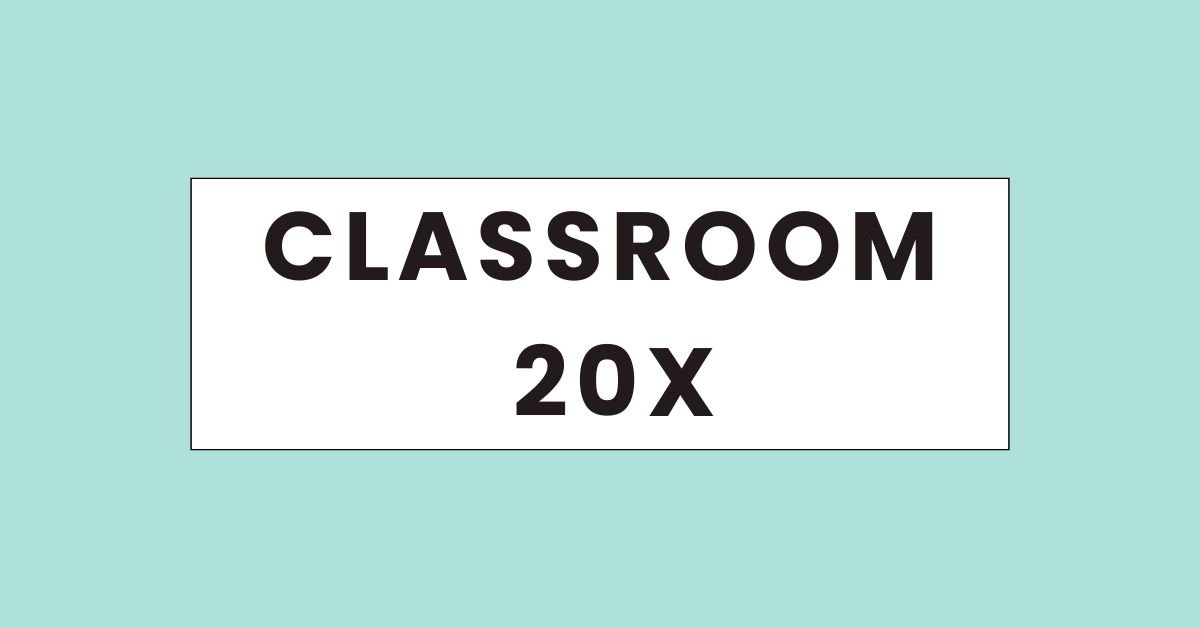Classroom 20x is a term that signifies the evolution of traditional classrooms into fully tech-integrated, interactive, and personalized learning environments. It combines digital tools, artificial intelligence, virtual reality, and student-centered pedagogy to shape the future of education.
From Chalkboards to Smart Boards
Gone are the days of chalk dust and static lectures. Classroom 20x replaces traditional boards with smart, interactive displays. These devices allow teachers to present multimedia lessons, interact with content in real time, and save sessions for later review.
The Role of Artificial Intelligence
AI in Classroom 20x is more than a buzzword. It powers personalized learning paths, automates grading, identifies student learning patterns, and provides real-time feedback. AI tutors help bridge learning gaps while freeing teachers to focus on mentoring and creativity.
Virtual Reality Enhancing Learning
With VR headsets, students in a Classroom 20x can explore ancient civilizations, travel the solar system, or dissect a virtual frog. This immersion leads to deeper understanding and retention, transforming learning into an adventure rather than a chore.
Gamification and Motivation
Gamified lessons make learning more engaging. Points, levels, badges, and leaderboards add a game-like experience to subjects like math and science. In Classroom 20x, gamification isn’t a gimmick—it’s a strategy to motivate and reward consistent effort.
Student-Centered and Adaptive Learning
Unlike traditional methods, Classroom 20x adjusts to each student’s pace and style. If a learner struggles with fractions, the system revisits basics before progressing. This adaptive approach ensures no student is left behind or held back.
The Rise of Cloud-Based Education
All learning materials, assignments, and projects in Classroom 20x are cloud-based. Students access them from any device, anywhere, at any time. This accessibility breaks down barriers and supports continuous, on-demand learning.
Collaborative Tools and Group Work
Classroom 20x encourages collaboration through tools like Google Workspace, Microsoft Teams, and AI chat assistants. Students can co-edit documents, share ideas, and work on group projects in real time, even remotely.
Data-Driven Teaching Decisions
Real-time analytics in Classroom 20x give teachers insight into individual and class-wide progress. With dashboards showing test scores, attendance, participation, and emotional tone, instructors make informed decisions quickly and accurately.
The Teacher’s New Role
Teachers in a Classroom 20x environment act more as facilitators and guides rather than sole knowledge providers. They coach, motivate, and personalize instruction using data and AI support to maximize student growth.
Digital Citizenship and Online Etiquette
With the increased use of technology, students in Classroom 20x must learn digital responsibility. Lessons include cyber safety, ethical use of content, respectful communication, and understanding one’s digital footprint.
Hybrid and Remote Learning Models
Classroom 20x integrates both physical and virtual learning seamlessly. Whether students are in class, at home, or on the go, they remain connected to lessons, peers, and teachers through robust, interactive platforms.
Inclusivity and Accessibility in Design
From screen readers for the visually impaired to real-time language translation tools, Classroom ensures all students—regardless of ability—have equal access to quality education. It brings universal design principles to life.
Environmental Benefits of Paperless Classrooms
By reducing reliance on paper, Classroom 20x supports sustainability. Assignments, notes, and reports exist in digital formats, cutting waste and encouraging eco-friendly habits among students and staff alike.
Challenges of Implementation
Despite its promise, Classroom 20x faces obstacles. High costs, internet dependency, teacher training gaps, and data privacy concerns must be addressed to ensure successful integration and equity across institutions.
Parental Involvement and Digital Portals
Parent-teacher communication thrives in Classroom 20x. Digital portals allow parents to monitor progress, attendance, and behavior. This transparency fosters stronger home-school partnerships and supports student accountability.
Mental Health and Emotional Support Tools
Modern classrooms include AI-powered emotional check-ins and access to digital counseling resources. Classroom emphasizes well-being, using tech to detect mood shifts and provide timely support.
Continuous Professional Development for Teachers
Educators must evolve alongside their classrooms. Ongoing professional development ensures teachers are equipped to use new technologies effectively and deliver dynamic, relevant instruction.
Financial Investment and Policy Support
Governments and institutions must commit to funding and policy support for Classroom 20x. Public-private partnerships, grants, and innovation-friendly policies are key to turning futuristic visions into daily reality.
Preparing Students for Future Careers
Classroom 20x teaches coding, critical thinking, collaboration, and digital literacy—skills vital for success in tomorrow’s job market. It’s not just education reform; it’s career preparation from day one.
Conclusion
Classroom 20x isn’t just a tech upgrade—it’s a paradigm shift. It redefines how students learn, how teachers teach, and how knowledge is shared. With thoughtful implementation and a commitment to inclusivity, the future of learning can be more personalized, interactive, and impactful than ever before. The digital revolution in education is not coming—it’s already here. And Classroom is leading the charge.
FAQs
What does Classroom mean?
Classroom 20x represents the next generation of learning environments, integrating cutting-edge technologies to personalize and enhance education.
How does AI help in Classroom?
AI assists with personalized learning, grading, progress tracking, and identifying areas where students need extra help.
Is Classroom 20x suitable for all age groups?
Yes, the model can be adapted for primary to higher education, with age-appropriate tools and strategies.
Can traditional schools transition easily to Classroom?
It requires planning, infrastructure upgrades, teacher training, and investment, but gradual implementation is possible.
What are the risks of Classroom ?
Potential risks include overreliance on technology, data privacy concerns, screen fatigue, and unequal access among students.
